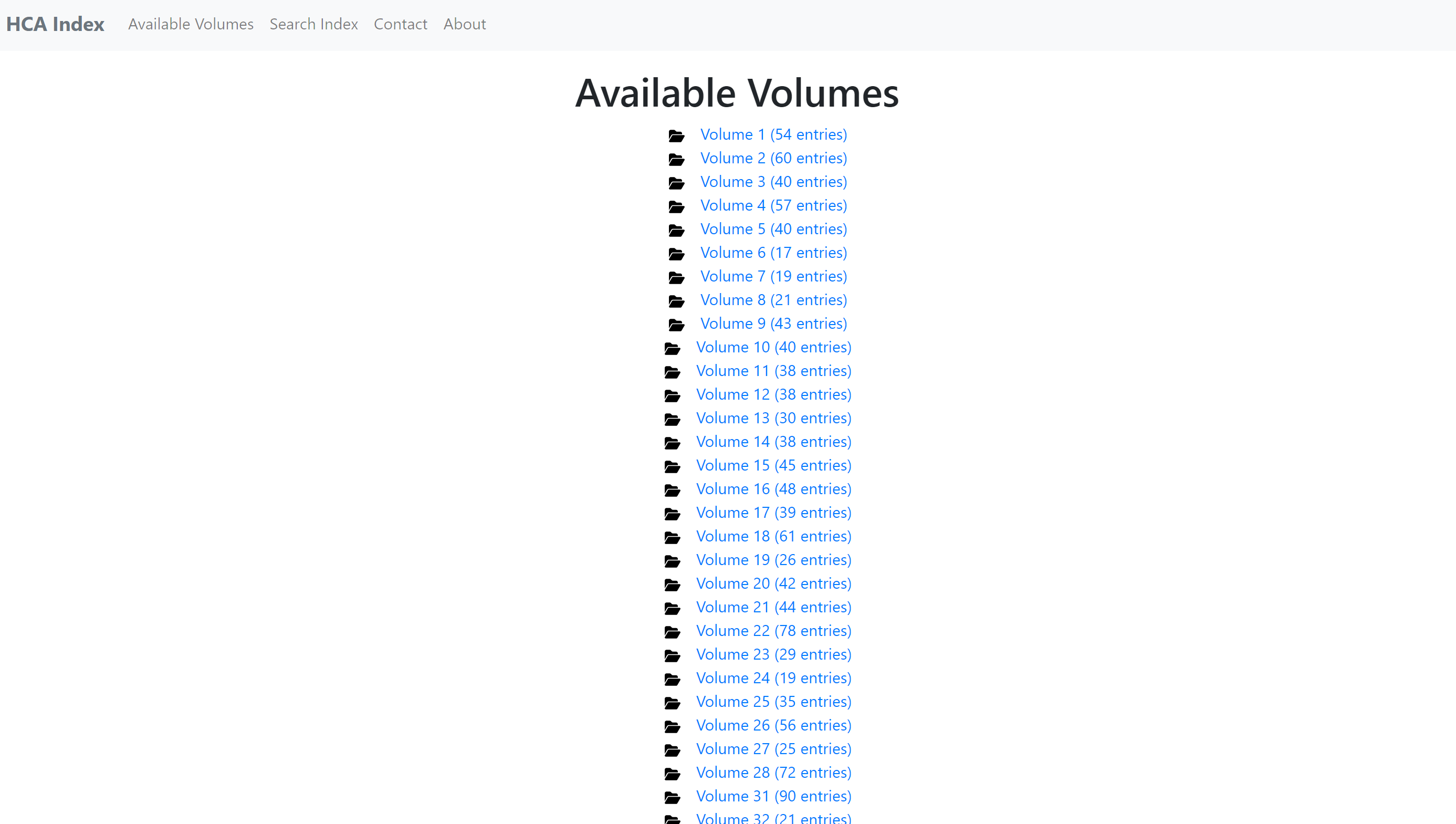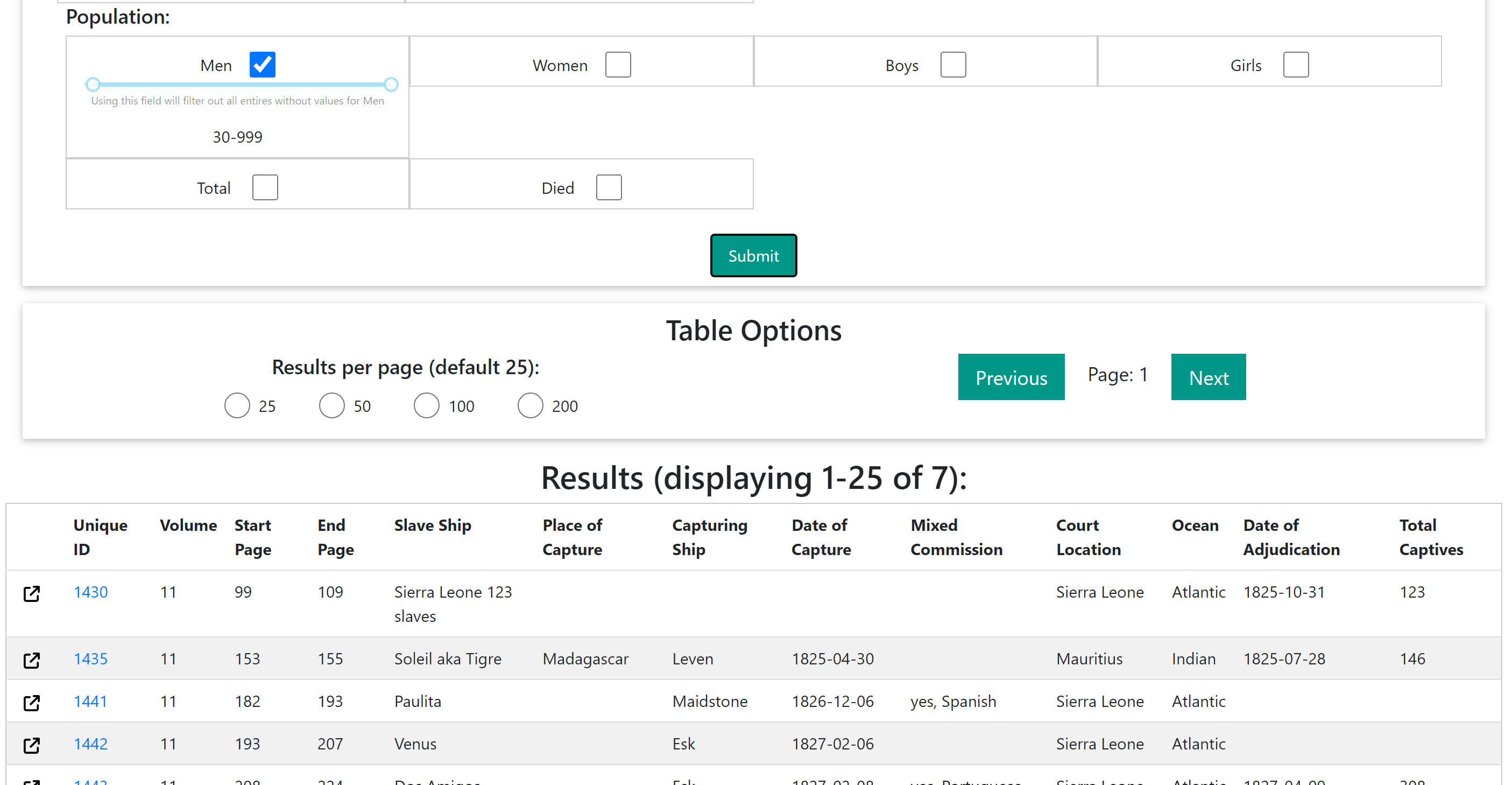Slave Ship Database
Winter 2021 - Spring 2023
The HCA Index or Slave Ship Database project is a web application for searching historical records of slave ship captures from the 19th century. These records come from the British National Archive's parliamentary papers specifically HCA 35 (house of commons volume 35) which detail the fates of slave ships and the captives on them that were captured by the British royal navy.
The records themselves are 19th-century ‘copperplate’ – a style of clerical writing – written by trained scribes where the court adjudications took place. As a small note, many of the court adjudications were of mixed commission because the ships were flying under many different national flags but were captured under the legal pretense of treaties that the British signed with European maritime powers; An early instance of formalized international maritime law.

Copperplate example (distribution of parliamentary papers is controlled by the British National Archives so I can’t show them here) src:lawbookexchange.com "PETITION TO THE MAYOR OF ROCHESTER RESPECTING THE SLAVE TRADE, 1814"
Background
This web application was made at the behest of Dr. Mathew Hopper at Cal Poly. One of Professor Hopper’s main fields of research is the transatlantic slave trde, and in one of his upper division classes, students first learn about the slave trade from a variety of primary sources (most notably the memoir of Olaudah Equiano who experienced the slave trade as a captive). Then, in the second half of the course, students pick one Ship and read through the 19th century copperplate record of the ship's capture, captives, and adjudication. Students write a term paper on their chosen ship to cap off the course.
I took this class in winter of 2021, and chose to write about The Charles, and Dutch ship captured with 264 souls on board. However, picking the ship was an affair that involved sifting through a clumsy excel document with thousands of manual entries. I saw the potential for a proper database system to enable students and Professor Hopper to quantitatively analyze the records, and for students to filter and pick out interesting ships to research.
You can see my paper on The Charles Here.
Database Project Timeline
Starting in Spring 2022, Ryan Linard and I started working on this project, picking up from an attempt by previous Cal Poly CS student. The previous project was a good starting off point and helped us create a framework for future development but had major performance and architecture issues.
The main customer of the project would be Professor Hopper and his students so we tailored the project to match their use cases. The web application has two main user-facing parts: the search page and the volume browser. The Search pages lets the user filter entries by various attributes to find records that have unique or otherwise interesting characteristics. The volume browser was a later addition and an extension of the searching functionality I implemented. It allows the user to navigate the database chronologically, as if they had the records physically in front of them.

Splitting the data into volumes reflects how the data are physically laid out in the primary source material – and splits the data up into manageable chunks.
Search Page
I spent most of my time building the search page. The previous iteration of this project by the previous student had a single search field that would try to autocomplete on each letter the user typed in – and in the process queried the entire database on each keystroke! This system was not very well suited for the users of this database, who needed a more filter-style search system. Accordingly, I implemented a search system that allows for the user to filter on each of the 20 or so attributes that each ship has (there are many ships with incomplete data, as this data was handwritten in the 19th century.) I also created a results table that showed a subset of relevant attributes, and a detail page for each entry where the entire set of attributes can be viewed.



Results
At the conclusion of this project, we were able to deploy and make the web application available for Professor Hopper and students studying the Transatlantic Slave Trade.